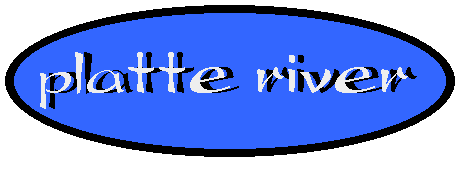
Facts about the Platte River Watershed
Platte Lakes: These lakes are classified as glacial lake embayments which means they were once bays of Lake Michigan formed by lobes of the last glacier. Offshore currents in Lake Michigan later deposited sand bars across the mouths of these bays separating them from the Great Lake and forming the inland lakes we see today.
Name Origin: The Platte River came from the French word "flat". It is not known who chose the name, it might have been a French Man or an Indian. The Platte River may have been named for its low banks.
Location: The Platte River is located in Benzie
County. The river starts in Lake Ann and ends at Lake Michigan. The canoeable part of it starts on the U.S.-31 bridge east of Honor and ends up in Lake Michigan.
Length: The river is twenty-five miles long, there are sixteen miles of canoeing waters. There are no rapids or water falls.
Recreation: The thirteen miles of stream between Burnt Mill Road and Platte Lake is the best place for trout fishing because the water temperature is very cool therefore its the perfect place for trout.
Tributaries: The principle tributaries are the North Branch, Carter Creek, and Brundage Creek.
Widths and depths: The main stream is from 20 to 90 feet wide. The average width of the stream is
between 45 and 50 feet. The water depth is generally shallow. Especially in the stretch from Lake Ann to about a mile above Platte Lake. Most of the stream here is less than one foot deep. Few of the pools as much as 5 feet deep.
Aquatic Plants: The more prevalent aquatic plants are Water Weed (Elodea), Buttercup (Ranunculus), Watercress (Nasturtium), and Narrow-leaf Pondweed
(Potamogeton).

